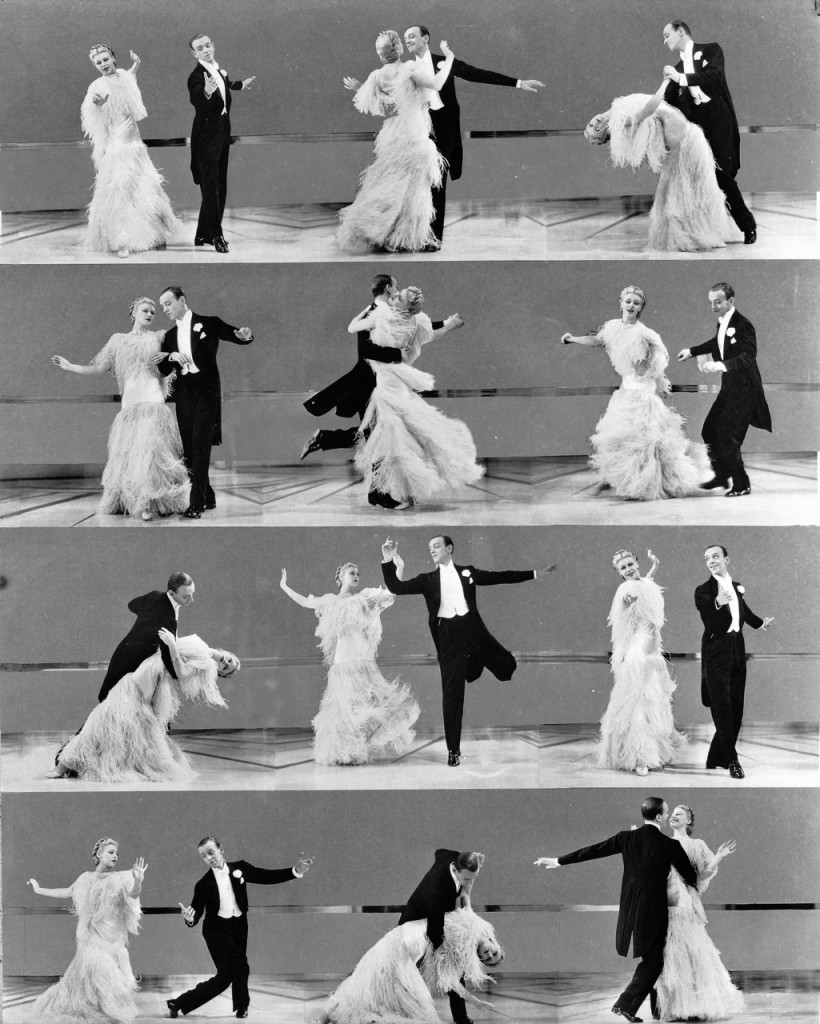 After decades of being demonized as box-office poison, movie musicals are back – thanks in no small part to the millions of girls and boys still howling “Let It Go” more than a year after the theatrical release of “Frozen.” Last month, “Into the Woods” hit theaters, and audiences flocked to see the likes of Meryl Streep, Emily Blunt, and Johnny Depp chew up the scenery in Rob Marshall’s adaptation of the Sondheim multi-fairy tale extravaganza. This month it was announced that a movie adaptation of the Broadway smash “Wicked” is under way, with Lea Michele and Harry Styles possibly attached. And Richard LaGravenese’s terrific film adaptation of the off-Broadway hit “The Last Five Years” is poised to hit theaters in the next few weeks. Starring Anna Kendrick as a stage actress in a stormy relationship with a writer (Jeremy Jordan), it’s as much about the make-it-or-break-it world of show biz as it is about millennial romance.
After decades of being demonized as box-office poison, movie musicals are back – thanks in no small part to the millions of girls and boys still howling “Let It Go” more than a year after the theatrical release of “Frozen.” Last month, “Into the Woods” hit theaters, and audiences flocked to see the likes of Meryl Streep, Emily Blunt, and Johnny Depp chew up the scenery in Rob Marshall’s adaptation of the Sondheim multi-fairy tale extravaganza. This month it was announced that a movie adaptation of the Broadway smash “Wicked” is under way, with Lea Michele and Harry Styles possibly attached. And Richard LaGravenese’s terrific film adaptation of the off-Broadway hit “The Last Five Years” is poised to hit theaters in the next few weeks. Starring Anna Kendrick as a stage actress in a stormy relationship with a writer (Jeremy Jordan), it’s as much about the make-it-or-break-it world of show biz as it is about millennial romance.
To tide us over until these films hit theaters – and because, in general, great new film releases are hard to come by in the dark days of winter – here are six vintage movie musicals about musicals that deserve a second look.
“42nd Street” (1933)
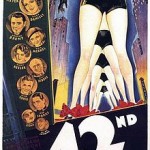 Directed by Lloyd Bacon and the legendary Busby Berkeley, this adaptation of Bradford Ropes’s novel focuses on the backstage antics of an especially fraught Broadway musical. Bebe Daniels is the star two-timing the show’s financial backer with her vaudeville boyfriend; Ruby Keeler is the resident ingénue; Dick Powell is her most ardent admirer. This black-and-white classic doubles as a fascinating Depression-era time capsule (the slang! the bobbed hair! the shadow of financial peril!) and as a showcase for then-up-and-comers Busby Berkeley, who staged the rhapsodic dance sequences, and Ginger Rogers, who steals the show as wise-cracking chorine “Anytime Annie.”
Directed by Lloyd Bacon and the legendary Busby Berkeley, this adaptation of Bradford Ropes’s novel focuses on the backstage antics of an especially fraught Broadway musical. Bebe Daniels is the star two-timing the show’s financial backer with her vaudeville boyfriend; Ruby Keeler is the resident ingénue; Dick Powell is her most ardent admirer. This black-and-white classic doubles as a fascinating Depression-era time capsule (the slang! the bobbed hair! the shadow of financial peril!) and as a showcase for then-up-and-comers Busby Berkeley, who staged the rhapsodic dance sequences, and Ginger Rogers, who steals the show as wise-cracking chorine “Anytime Annie.”
“Top Hat” (1935)
 Two words: Fred and Ginger. Of all the Fred Astaire and Ginger Rogers films, this screwball about an acclaimed Broadway dancer (Astaire) wooing a model (Rogers) is the most beloved – and deservedly so. Featuring a swoony Irving Berlin score; a Daffy Duck of a premise (Ginger mistakes Fred for her best friend’s husband but falls for him anyway); and a swath of satin gowns, spit-shined spats, and fur stoles, this musicomedy soars as a platform for the most dazzling dance duo ever captured on celluloid – especially in “Isn’t It a Lovely Day,” arguably the duo’s best on-screen number of all time.
Two words: Fred and Ginger. Of all the Fred Astaire and Ginger Rogers films, this screwball about an acclaimed Broadway dancer (Astaire) wooing a model (Rogers) is the most beloved – and deservedly so. Featuring a swoony Irving Berlin score; a Daffy Duck of a premise (Ginger mistakes Fred for her best friend’s husband but falls for him anyway); and a swath of satin gowns, spit-shined spats, and fur stoles, this musicomedy soars as a platform for the most dazzling dance duo ever captured on celluloid – especially in “Isn’t It a Lovely Day,” arguably the duo’s best on-screen number of all time.
“For Me and My Gal” (1942)
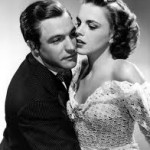 About vaudevillians during World War I, this stars Gene Kelly as a hoofer who becomes a troops entertainer after his performance partner and fiancé (Judy Garland in her first “adult” role) dumps him for dodging the draft. Garland and Kelly were always grand together and, choreographed by director Busby Berkeley, the dance sequences are glorious. But it’s the Oscar-nominated score that takes the cake: Sweet Judy Brown Eyes never sounded better, especially in the titular song.
About vaudevillians during World War I, this stars Gene Kelly as a hoofer who becomes a troops entertainer after his performance partner and fiancé (Judy Garland in her first “adult” role) dumps him for dodging the draft. Garland and Kelly were always grand together and, choreographed by director Busby Berkeley, the dance sequences are glorious. But it’s the Oscar-nominated score that takes the cake: Sweet Judy Brown Eyes never sounded better, especially in the titular song.
“Singin’ in the Rain” (1952)
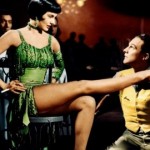 Gene Kelly co-directs and stars as a silent movie star making his first talkie; a very young Debbie Reynolds (she learned to dance for the movie) plays the apple of his eye; wiggly worm music conductor Donald O’Connor co-stars his best friend. With some of the most quotable dialogue of all time (I caaaan’t stand’em!), stunning costumes (Who can forget Cyd Charisses’s long legs in that emerald sheath?), song and dance sequences to break your heart, (“Make’em Laugh,” “Good Morning,” and “Singin’ in the Rain,” for starters), and sly-fox sendups of the movie industry, this film may be widely hailed as the best movie musical of all time – but it still doesn’t get its due as one of the most clever meta-films ever made.
Gene Kelly co-directs and stars as a silent movie star making his first talkie; a very young Debbie Reynolds (she learned to dance for the movie) plays the apple of his eye; wiggly worm music conductor Donald O’Connor co-stars his best friend. With some of the most quotable dialogue of all time (I caaaan’t stand’em!), stunning costumes (Who can forget Cyd Charisses’s long legs in that emerald sheath?), song and dance sequences to break your heart, (“Make’em Laugh,” “Good Morning,” and “Singin’ in the Rain,” for starters), and sly-fox sendups of the movie industry, this film may be widely hailed as the best movie musical of all time – but it still doesn’t get its due as one of the most clever meta-films ever made.
“Funny Girl” (1968)
 Barbra Streisand won an Oscar for this turn as Ziegfeld star Fanny Brice, and, man, did she deserve it. But while such critics as Roger Ebert thought the rest of the film was as poor as her performance was good, I beg to differ: Its broad wink at the Jewish Lower East Side and early-twentieth-century-backstage Broadway is a blast, as is Omar Sharif as Brice’s no-goodnik beau Nicky. And clad in cleavage-baring sparkly costumes and roller skates, Babs is almost indescribably good: magnetically comic and moving all at once. Who knew her first movie role also would be her best?
Barbra Streisand won an Oscar for this turn as Ziegfeld star Fanny Brice, and, man, did she deserve it. But while such critics as Roger Ebert thought the rest of the film was as poor as her performance was good, I beg to differ: Its broad wink at the Jewish Lower East Side and early-twentieth-century-backstage Broadway is a blast, as is Omar Sharif as Brice’s no-goodnik beau Nicky. And clad in cleavage-baring sparkly costumes and roller skates, Babs is almost indescribably good: magnetically comic and moving all at once. Who knew her first movie role also would be her best?
“All That Jazz” (1979)
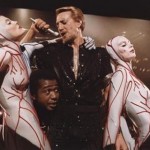 Directed, choreographed, and co-written by Bob Fosse, this is a thinly disguised autobiographical account of the show-biz veteran’s struggles with fidelity and addiction while simultaneously directing a Broadway musical and making a movie. Over the top and unfathomably self-referential and redundant, by all rights this movie musical should be terrible. Instead, it’s brilliant: gut-wrenching, erotic, revelatory, and chockablock with the most groundbreaking modern dance ever staged on film. Bonus: a young Jessica Lange as death herself.
Directed, choreographed, and co-written by Bob Fosse, this is a thinly disguised autobiographical account of the show-biz veteran’s struggles with fidelity and addiction while simultaneously directing a Broadway musical and making a movie. Over the top and unfathomably self-referential and redundant, by all rights this movie musical should be terrible. Instead, it’s brilliant: gut-wrenching, erotic, revelatory, and chockablock with the most groundbreaking modern dance ever staged on film. Bonus: a young Jessica Lange as death herself.
This was originally published in Word and Film.
